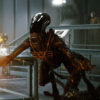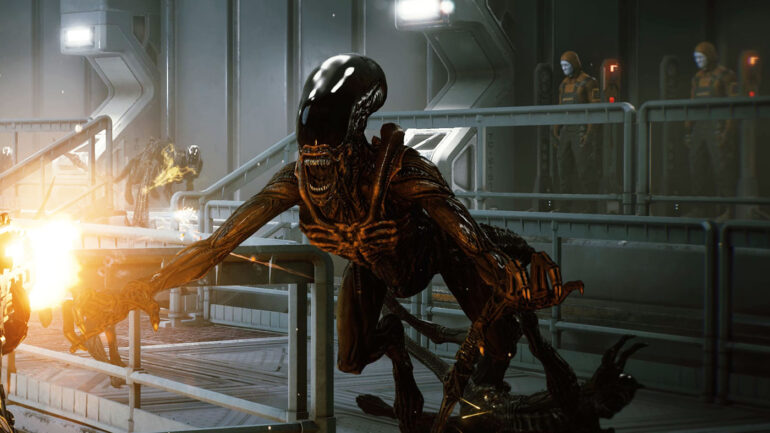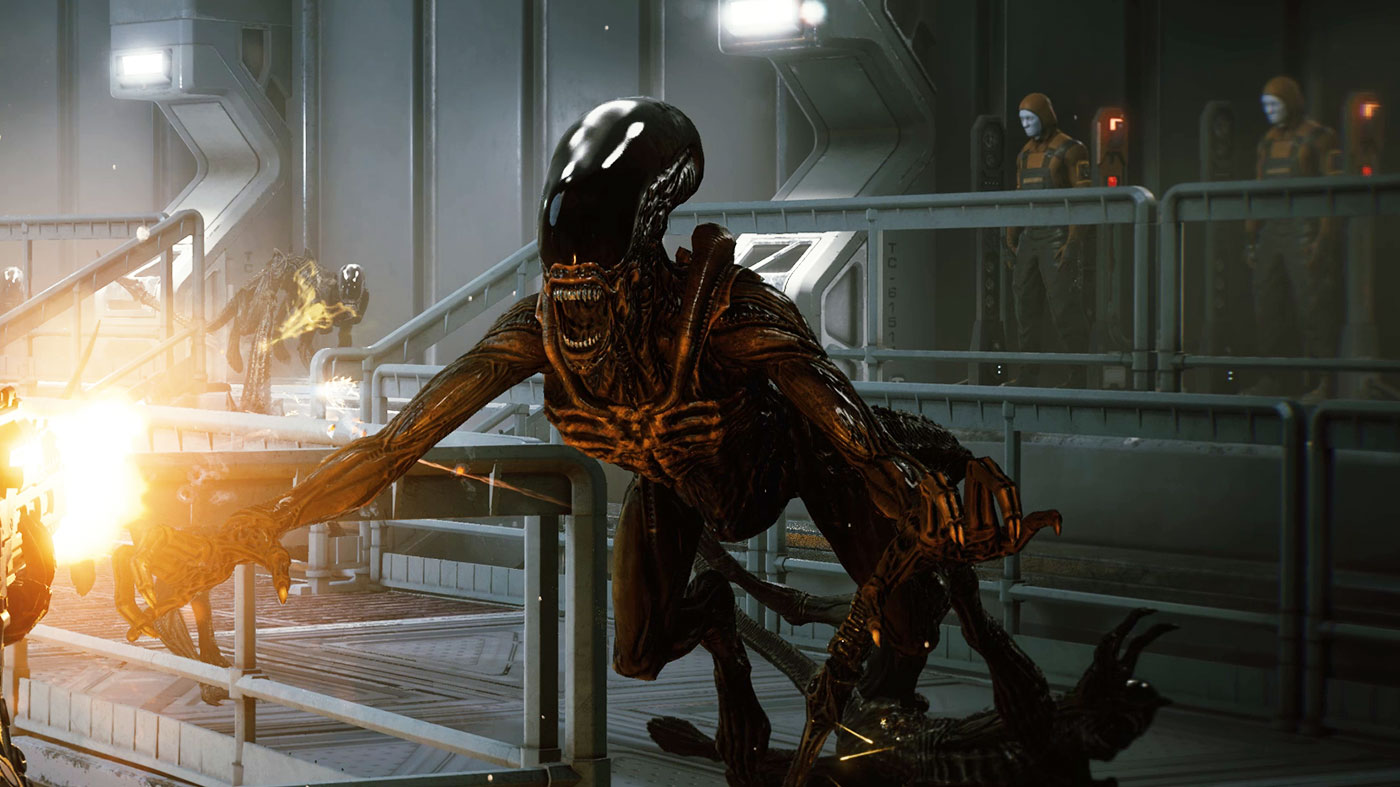Alien, as a franchise, is sadly no stranger to being done dirty.
Following Ridley Scott’s original 1979 sci-fi horror and James Cameron’s 1986 action-packed successor, subsequent films became bogged down with studio interference, questionable narrative choices and tie-ins with the Predator franchise.
Of course, video game adaptations aren’t much different. Bar a few exceptions, most notably Alien Isolation, Alien games have often met a lukewarm critical reception.
Perhaps you could mount a defence for some films and games along the way, but my hope was brighter days were ahead following Disney’s takeover of the franchise as part of the acquisition of 21st Century Fox.
If Aliens: Fireteam Elite, is indicative of the quality we should expect from the franchise under Disney’s helm though, I’d be concerned.
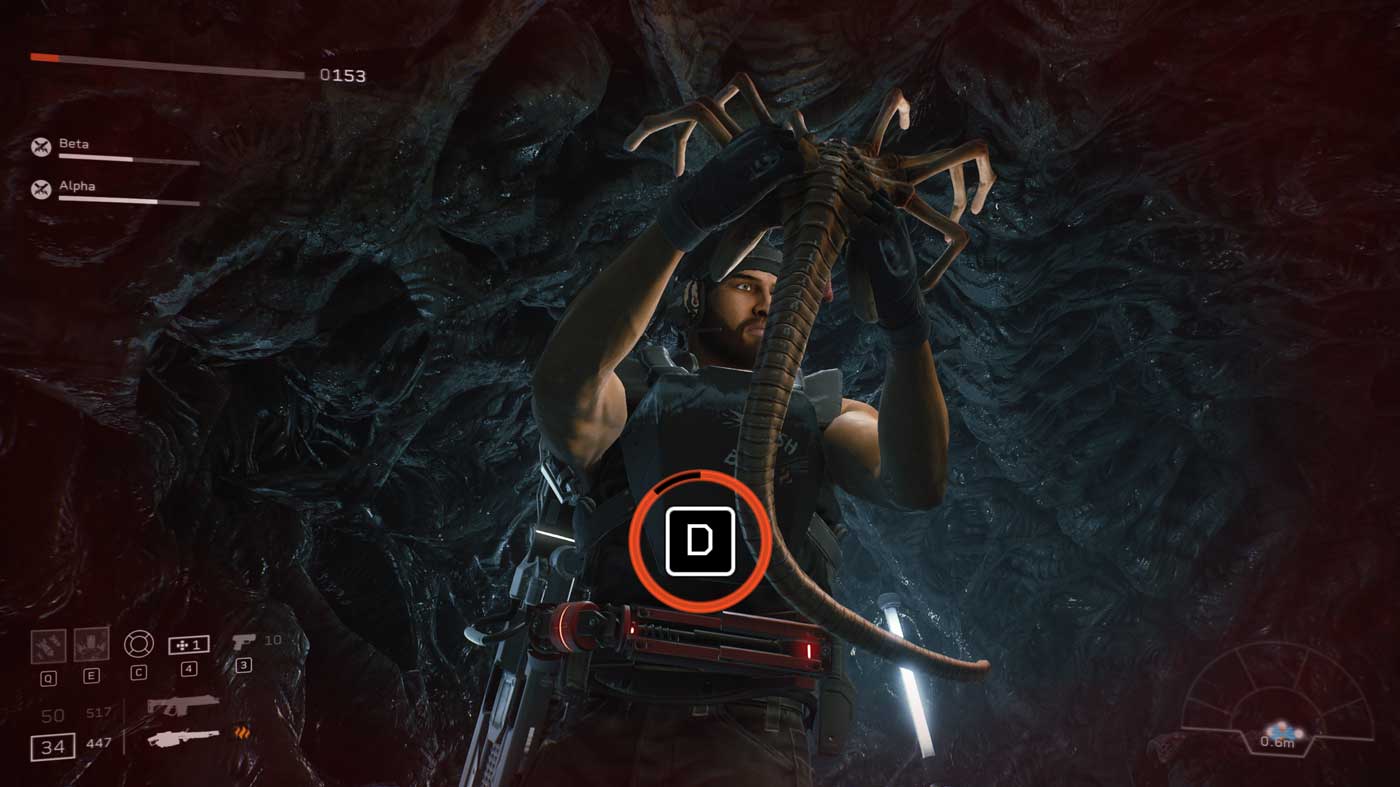
Purposefully pluralising the ‘Alien’ in the title, Fireteam Elite, does what these game adaptations often do, leaning into the action elements of the franchise. Assembling a fireteam of three, the game pits you against what I can only describe as an onslaught of Xenomorphs — or ‘xenos’, ‘morphs’ and ‘bugs’ as the game often describes them.
Progressing through a campaign divided into four chapters, each with three missions in each, you play as a team of marines treading a well-trod path and responding to a distress signal to discover a Xenomorph presence. You soon discover Weyland-Yutani are up to their usual antics and it’s not long before you confront surprisingly well-armed synthetics or ‘synths’, too.
The story unfolds almost entirely through off-screen dialogue, narration and written objectives proceeding each mission. Although there’s a handful of NPCs you can interact with on your ship, dialogue is stilted, with no lip-sync on the characters models.

Consequently, the story takes a backseat. It’s simple enough to follow should you be paying attention, but fending off wave after wave in seemingly endless shooting galleries keeps you distracted enough that I wouldn’t be surprised if you’re left wondering what the hell you’re actually doing.
However, you can argue in a cooperative, survival shooter like this, the story is ultimately unimportant; it’s all about the experience you can have with your friends. Sadly, if your experience is anything like mine, you’ll find the game so monotonous and miscalculated that the tedium will make your friends very reluctant to stick around.
Although there’s been a clear effort to vary up the enemies, you’re never asked to approach a fight any differently than shooting straight. Be it your standard ‘bug’, the bursters, the spitters or the larger Xenomorph Drones, Warrior or Praetorian Guard, don’t expect to do anything different to take them down. Rather than pick off bits of armour and expose weak points, or make use of elemental damage with the flame thrower (one of my favourite weapons in the game), emptying whichever gun you’ve equipped does the job.
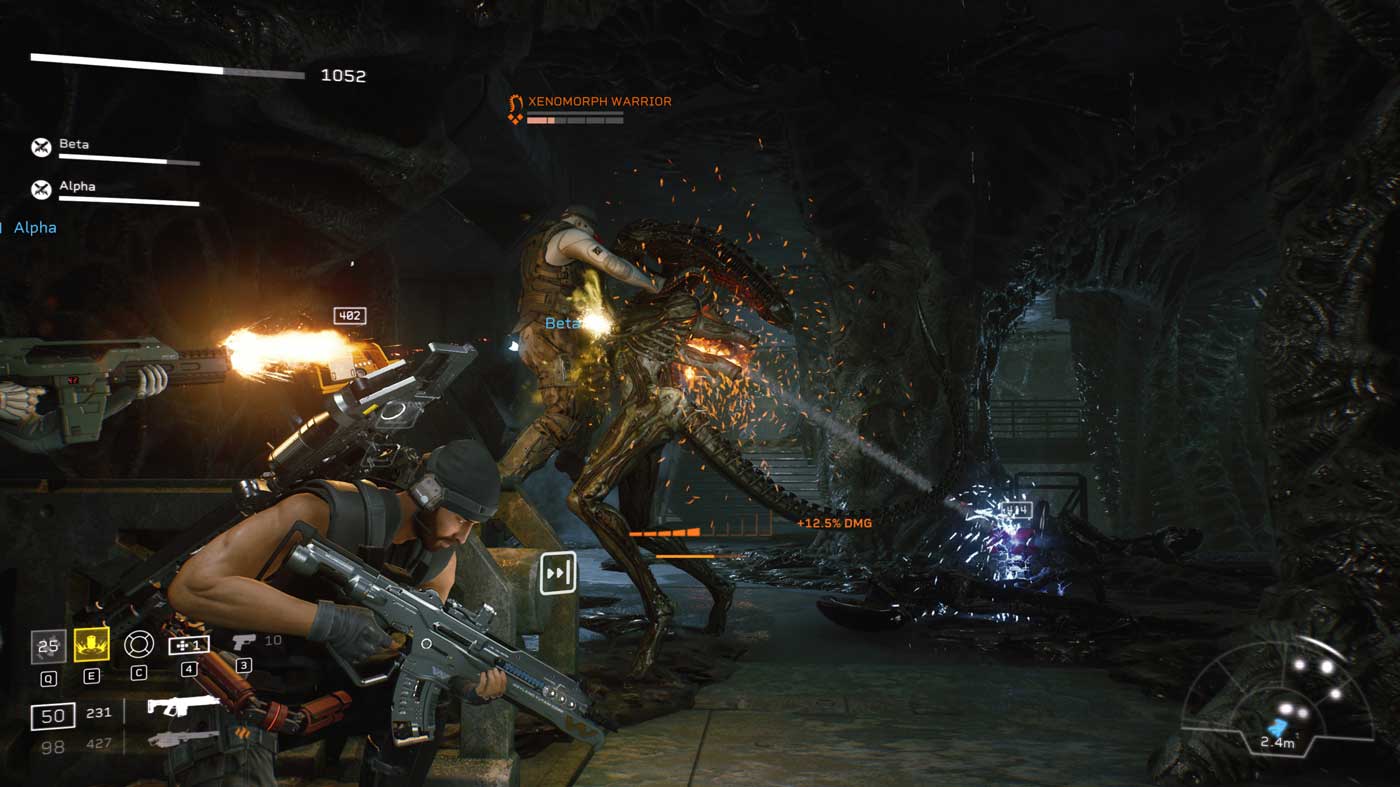
Rather than make a point of introducing these new enemy types, they’re just thrown at you. You’d be forgiven for not realising if you’d come up against new variants. Your friends might have dispatched them before you’d realised, or they could be eaten up in the swarm of enemies coming your way.
It’s relentless. Right from the get-go, a menagerie of aliens scuttles your way, with very little in the way of escalation. Weirdly, you come up against literally thousands of Xenomorphs before you even get a glimpse at a face-hugger. Zero suspense is built; thrown right into the action, it’s guns blazing for the handful of hours it’ll take you to mop up the alien threat.
Strangely, one of the positives I can point to is the Prowlers, which will sometimes hide in adjacent rooms or around corners and jump you, triggering a quick-time event to shake it off you, or a friend to rescue you. Face-huggers and some of the larger Xenomorph variants act the same. I usually wouldn’t celebrate a quick-time event, but in this case, it’s a momentary change in pace.
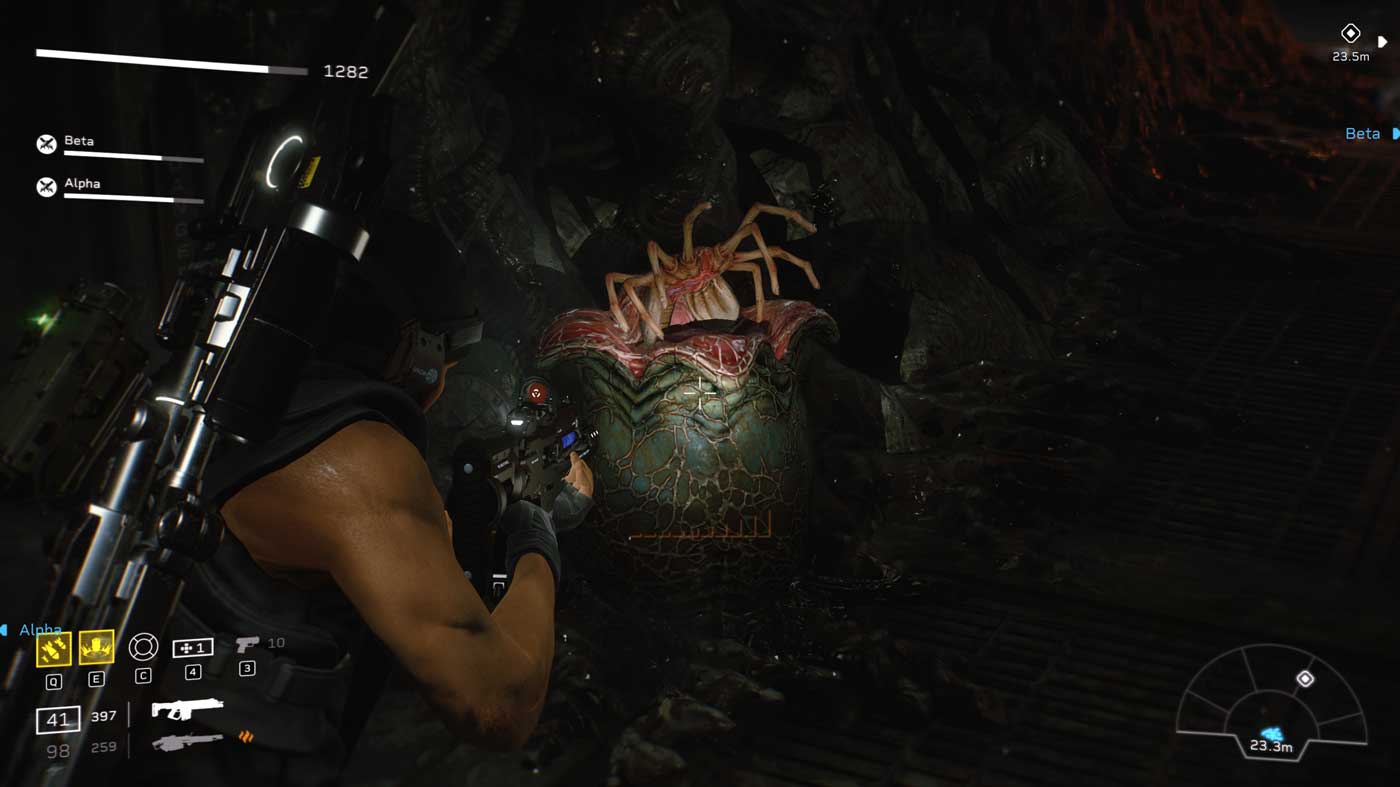
I appreciate too, that Xenos — god, it’s starting to catch on — crawl along the floors walls and ceiling, keeping you on an eye out for that one elusive enemy that’s preventing you from moving onto the next stage in the level. However, the famous motion sensor, relegated to the UI in the bottom right corner of the screen rarely serves much purpose. The threat invariably comes from one direction: straight ahead of you.
A staple of the Alien franchise, synths have a predictable murderous streak, but this time with the ability to throw grenades and snipe you from a distance, sometimes in heavy variants, other times with a riot shield or a flamethrower. Like every other threat in the game, all you’re asked to do as a player is point and shoot.
Rarely are you expected to make use of the cover mechanic. On occasion, utilising consumables you collect in each level, throwing down cryo traps and automated turrets, are useful in fending off attacks, but min-bosses just ask you to shoot at them longer.
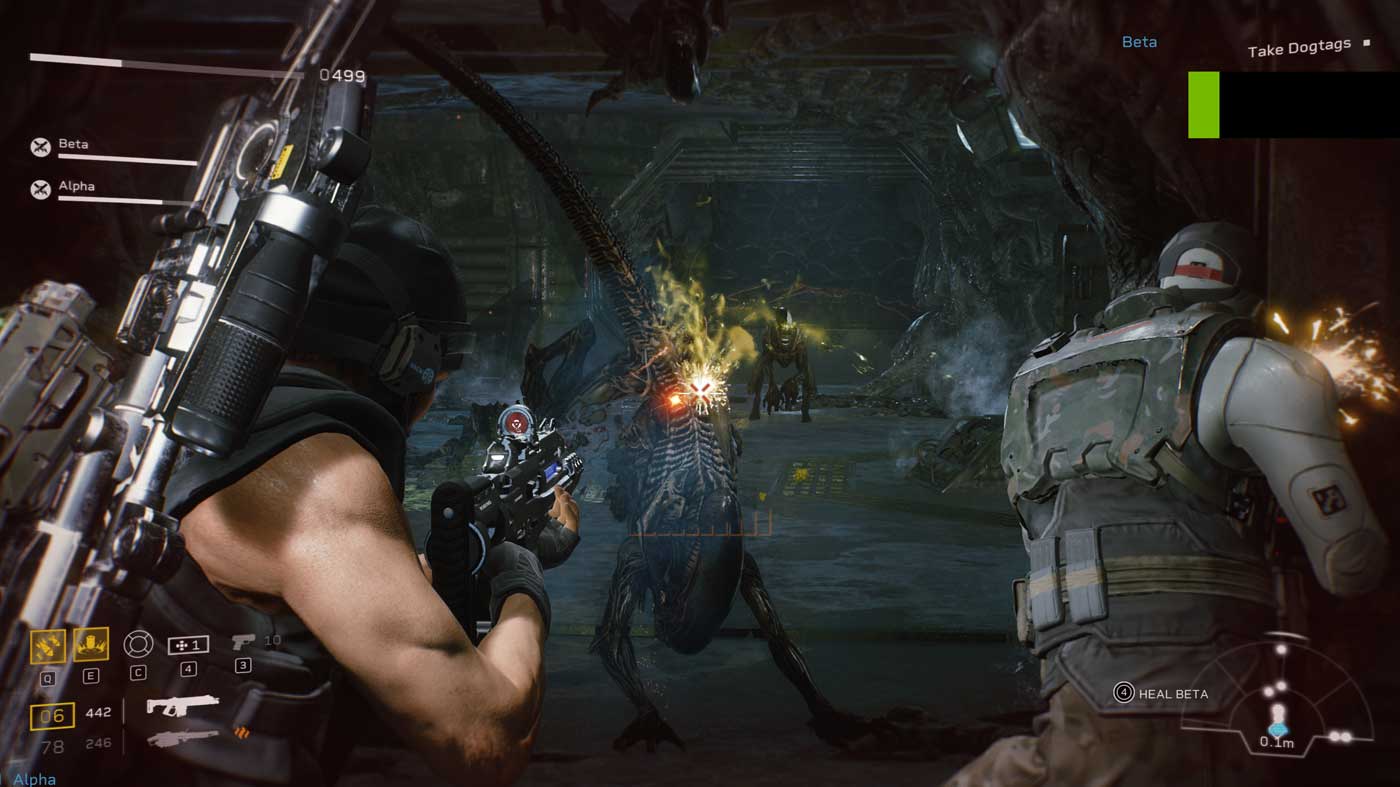
I was pleased with least that there was a passable level of loadout customisation offered through five different classes, each with its own equipment and weapon variants. I spent much of my time with the Demolisher class, as I developed an attachment to the flamethrower and Micro Rockets, but you benefit as a squad from diversifying, ensuring you have Doc ready to throw down a Trauma Station, and maybe a Gunner or a Technician to protect your rear.
However, other systems that make other cooperative shooters work are missing from Aliens: Fireteam Elite. Players only have access to missions they themselves have unlocked, meaning you cannot have friends drop in and help you out unless they’ve progressed that far too. There’s no option to invite a friend to join you mid-mission either, should you need the help. With no checkpoints either, even on the lowest difficulty, you’ll need to make sure you’re up to the task to avoid having to restart missions repeatedly and add to the tedium.
Thankfully, if you do have a hard time convincing your friends to stick with it, the game incorporates matchmaking and scales accordingly should you switch to a private lobby and fill your squad with bots.
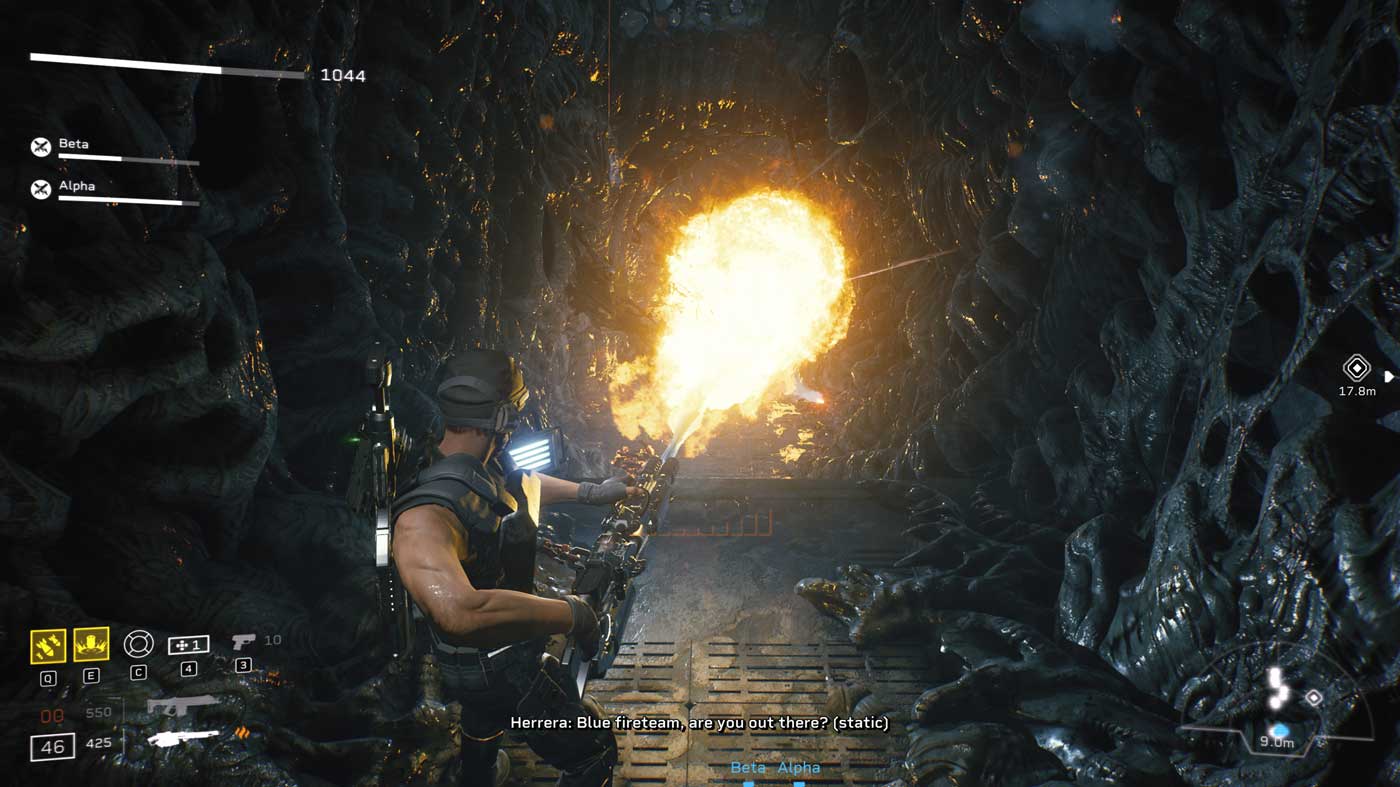
Harder difficulties unlock upon completing the campaign, along with a Horde more that challenges you to survive as many waves as you can. Why you could be bothered sinking much time into either is beyond me.
Challenge cards and the prospect of more upgrades, weapons and cosmetic unlocks through repeating missions add to replayability, without giving you much new to do in moment-to-moment gameplay.
Retailing at just $60 AUD, the game’s lower production budget is evident, not only in the brevity of the game, limited variety and shallowness of its mechanics but in the presentation of the game.
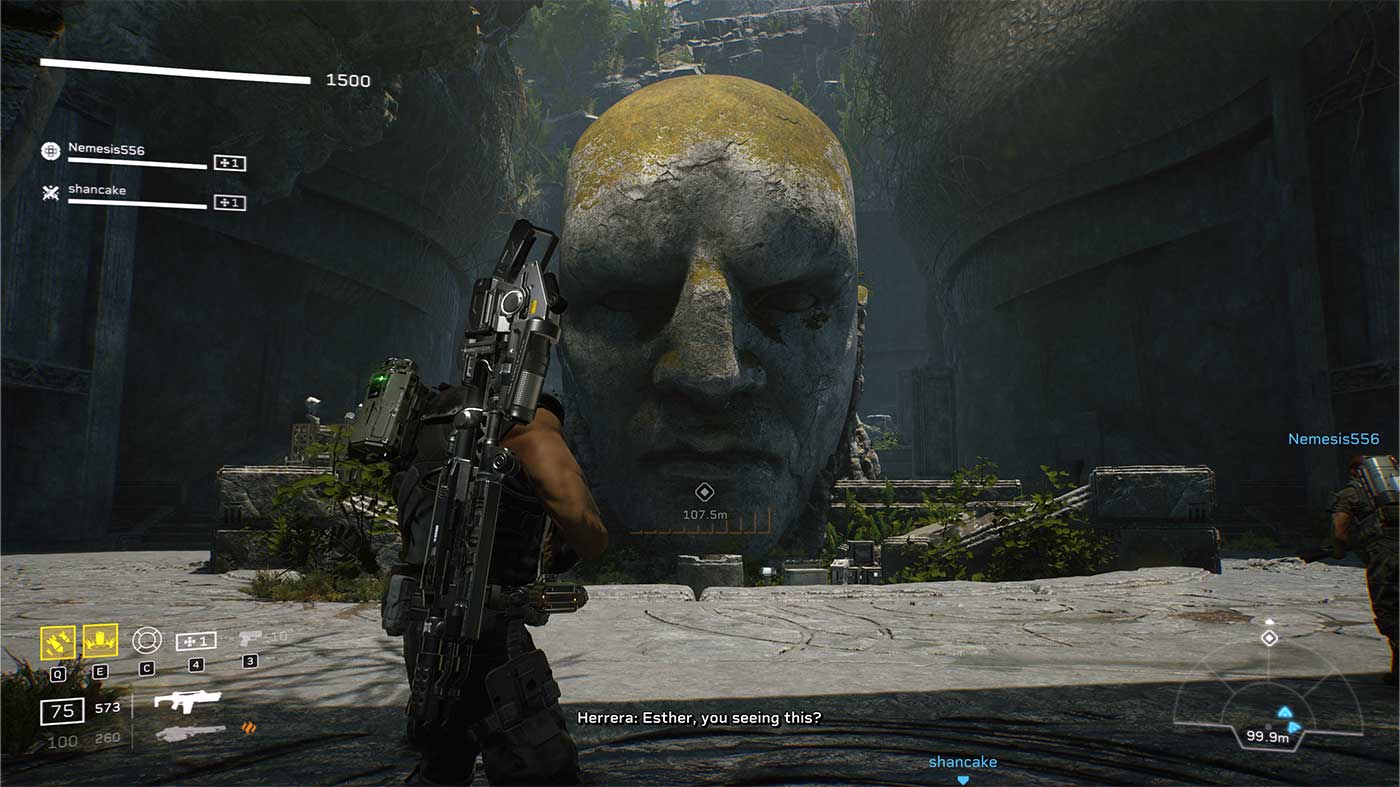
The script is at times laughable and the delivery is not much better. With chapters divided up, individual missions often end abruptly, your character freezing as you pass through a door as you work towards what you thought was a climactic moment in the story. Breaking the pace up more, you can only customise your loadout and character at your ship, which serves as a sort of Tower-esque, hub world from Destiny. Although you can navigate through your loadout customisation screen mid-mission, you can’t change anything. Equipping a new unlock means navigating back to the ship, to reload the mission after you’d dug into your inventory.
I was pleased to see the Xenomorphs all looking like you’d expect, sound effects pulled straight from the source material and close enough attention to detail to include the edging on the sides of the guns in James Cameron’s Aliens as customisable weapon decals.
However, with such strong visual design stemming from H.R. Giger’s work on the original film and Ridley Scott’s affinity for practical effects, I can’t help feel the environmental design of the game lacked the same impact and believability. They seemed light on detail, and almost like a knock-off version. Arguably, Returnal and the upcoming Scorn do a better job of pulling off the H.R. Giger stylings.

